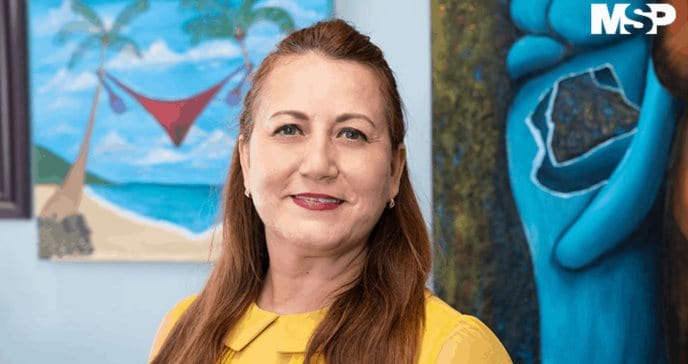Scientist Idales Flores, Puerto Rican molecular biologist and project leader.
This was demonstrated in a study called Profile a woman With Endometrial at Latin america s Spaincooperation between University of Health Sciences Ponce (PHSU), The San Lucas Episcopal Centerassociation Argentina Ph.D. in Endometriosis, Ponce Research Institute, Medical Sciences Campus (RCM), among others.
Its authors include Dr. Idalez Flores, scientist, Dr. Nabal Bracero, reproductive endocrinologist, and other authors such as Paula Ramos Echevería, Jose Oliveiras, Estefania Rivera, among others.
The study arose from the need to Low representation of women Hispanic or Hispanic women diagnosed with endometriosis in research seeking understanding Molecular and Biological Mechanism disease, as it remains a challenge.
“We always see that endometriosis is said to be only a gynecological symptom. And we really see it’s not, this condition affects other systems. We have gynecological symptoms, stomach, musculoskeletal, mental health, among other things.”
Most of the research studies have been conducted in Europe s United State. Among other things, as it turned out.
“Understanding this is vital to find out if there is any difference in endometriosis depending on race, genetics, environment and even culture. We want to answer about the endometriosis phenotype in Hispanic women and how it compares to other populations of women,” said Dr. Flores to medicine and Public Health (MSP).
The cross-sectional study (collecting self-reported data) was conducted between April 2019 and February 2020. Through a validated questionnaire, 1,378 women from 28 countries participated, among them, dominican republicAnd VenezuelaArgentina, Uruguay, ColombiaAnd Puerto Ricoamong other things.
98.3% self-identified as A a woman Hispanic/Latino descent, and there was a similarity between the number of married and unmarried women (39%). The majority of this sample were workers and the mean age was 34 years.
Among the reported gynecological symptoms that the majority experienced Pain Chronic abdominal and pelvic pain and vaginal pain, among others.
“Most of the patients gave a pain scale of 8 to 10 (scale of 0 to 10),” said the scientist.
Other reported symptoms are nausea, vomiting, diarrhea, back and leg pain, depression, insomnia, fatigue, headache and others of urine origin, many of which are in higher percentages when compared to the general population.
Behaviors considered significant health risks were not reported in this group of patients, such as smoking and alcohol consumption, among others.
94% had a diagnosis of endometriosis by laparoscopy, had symptoms around 21 years old, and age at diagnosis was about 28 years old. The menstrual cycles of these patients were mostly rated as regular with strong fluid between moderate to severe in 85%, a factor directly related to endometriosis.
Regarding pregnancy, the majority reported that they conceived naturally, while regarding infertility, this population indicated that it lasted for about three years.
Among the obstetric gynecological features, 34% reported having had an abortion, 40% had undergone a caesarean section during pregnancy and 47% had experienced complications during pregnancy.
“We’ve really made noise. They’re really paying attention to us. This first step was important and it shows the alliances are working. This is just the beginning. It’s the first time this profile has been introduced, but we still have a lot to do. We need to include More patients to study, barriers to diagnosis, creation of educational campaigns, and sources of funding to continue scientific studies, are among the many additional strategies.”

